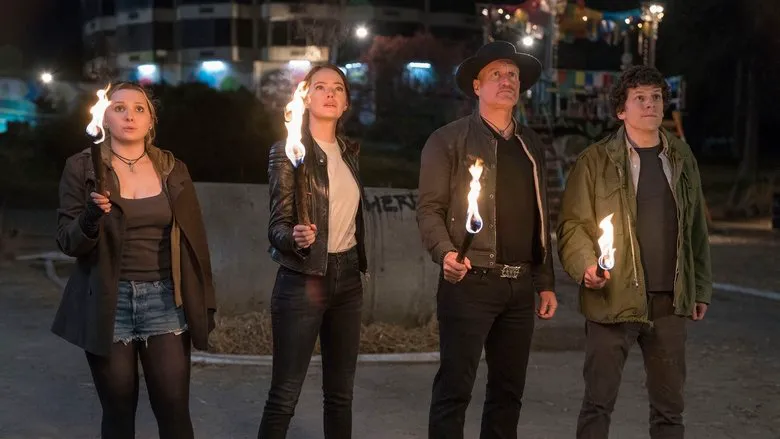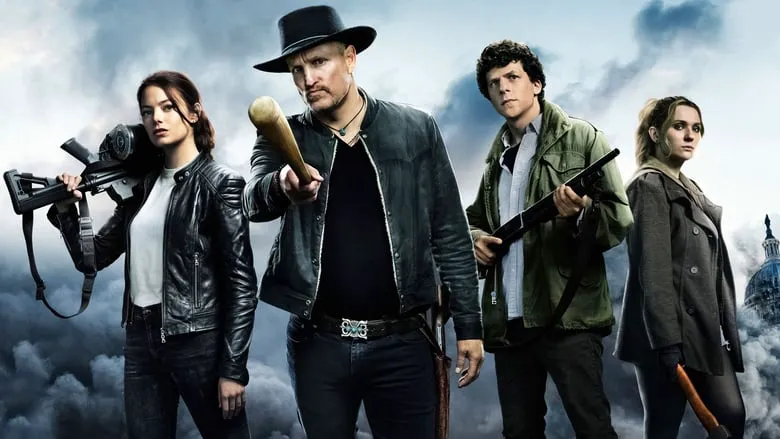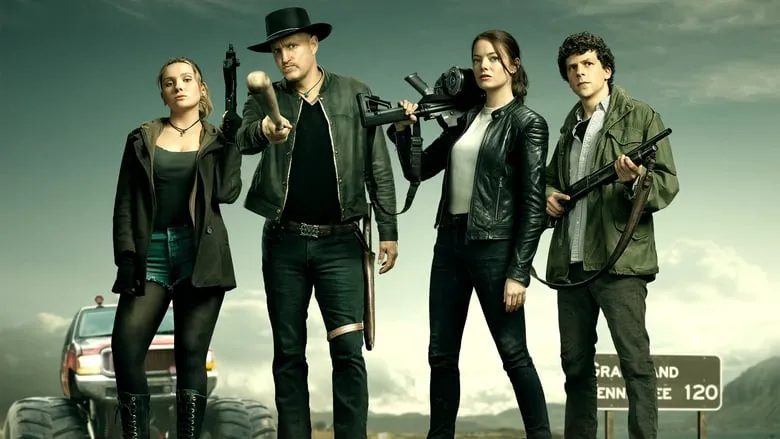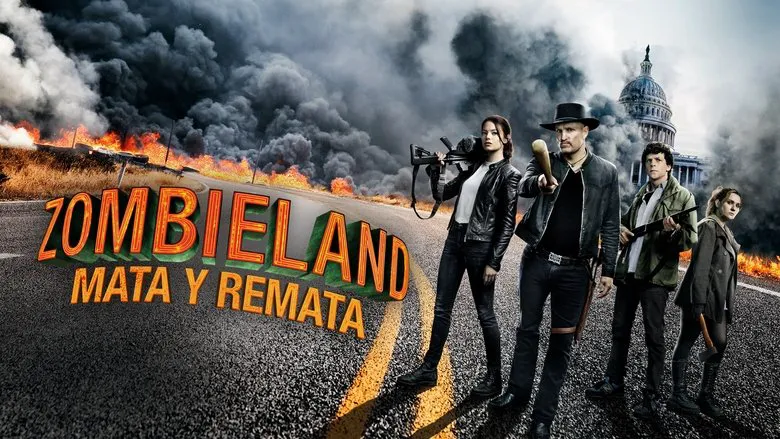A Second Helping of Zombie Mayhem: Zombieland: Double Tap Review
The quirky quartet of zombie apocalypse survivors – Columbus (Jesse Eisenberg), Tallahassee (Woody Harrelson), Wichita (Emma Stone), and Little Rock (Abigail Breslin) – have settled into a routine, making the White House their fortified home. But domestic bliss is fleeting. Boredom sets in, tensions rise, and Wichita and Little Rock pull another disappearing act. Wichita returns relatively quickly, but Little Rock, ever the independent spirit, runs off with a guitar-toting, pacifist hippie. They’re headed to Babylon, a mythical safe haven where everyone lives in harmony. Naturally, the rest of the gang sets out to rescue her from this supposed paradise.

A decade has passed since the original Zombieland shuffled onto screens. The zombie craze has largely died down, the pure comedy genre has migrated to television, and sequel fatigue is a real thing. Director Ruben Fleischer’s career hasn’t exactly been stellar since the first film, making his return to the franchise feel like a desperate attempt to recapture past glory. Similarly, screenwriters Rhett Reese and Paul Wernick, seem to be trying to recapture the magic of the original after a few misses.

Embracing the Redundancy
Zombieland: Double Tap is a sequel that nobody particularly asked for, in a franchise that nobody had high expectations for. In other circumstances, this could have been a recipe for disaster. However, the film revels in its own redundancy, and thrives on its lack of necessity. It doesn’t just follow the tropes of a superficial sequel, it seems to deliberately exaggerate them. The plot is a near-carbon copy of the first film, many of the characters rehash their original arcs, and Columbus’s narration turns the movie into an illustrated stand-up routine.

More of Everything
Everything is bigger, louder, and more intense. Columbus has two romantic interests instead of one, the number of love stories has doubled, and there are twice as many jokes and pop culture references. The original title of the sequel, Double Shot, emphasizes this “doubling” and pokes fun at it. Double Tap exploits the very nature of a sequel as a product that is inherently secondary and confined to specific narrative frameworks.

Old-School Charm with a Modern Twist
The film doesn’t try to be trendy. Instead, it flaunts its old-fashioned sensibilities, refusing to retire outdated one-liners or adding a “dumb blonde” archetype. Reese and Wernick are not interested in old or new sincerity, but only in the comical reworking of ready-made forms and plots. In the sequel, they expand the bestiary of zombies, and shamelessly steal a gag from Edgar Wright, expanding it to absurd proportions and reinforcing it with a complex action scene. Visually, Zombieland: Double Tap is in top form: limbs fly apart in slow motion, blood flows in rivers, and brains quietly slide down walls. All this is accompanied by stunning action choreography, making you wonder why Fleischer couldn’t achieve the same in Venom.
Despite its pleasant old-fashionedness, Zombieland occasionally touches on cultural trends in interesting ways. One of the main themes is a cruel satire of post-apocalyptic pacifists. In one scene, the theme of secondary art suddenly emerges in an age when information disappears too quickly to remember primary art: one of the hippies passes off a Bob Dylan song as his own. What does this mean? Nothing much. Just pleasant little things – like the whole of Zombieland: Double Tap. Survival Rule #32: Learn to enjoy the little things.